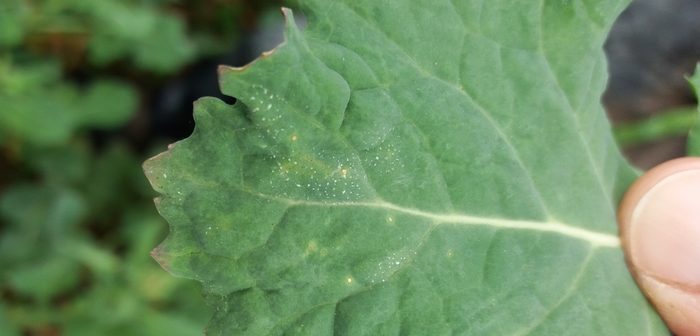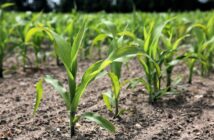AHDB’s light leaf spot preliminary forecast shows that the disease risk to winter oilseed rape (OSR) ranks among the lowest recorded in recent years.
The regional disease forecast highlights the proportion of susceptible (disease rating of 5) OSR crops predicted to have more than 25% of plants affected by the spring.
The relatively low-risk prediction is largely due to a limited disease incidence on pods at the end of the 2019/20 season.
Catherine Harries, who manages disease research at AHDB, said: “Moisture is conducive to disease spread. It is likely the relatively dry spring slowed disease development. However, the year-on-year reduction in the OSR area will have reduced spore levels too.”
The latest forecast follows on from recent research findings, published by AHDB during the summer, which showed little economic benefit from treating light leaf spot.
The ADAS-led trials took place during relatively low disease-pressure years (harvest years 2017–19). A yield uplift of between 0.17 and 0.27 t/ha was required to cover the cost of the fungicide programme. Applying no fungicides was often the most cost-effective option, even on the relatively susceptible variety used. The result held true regardless of whether fungicides were applied in alternation or mixtures. Even the cheaper, yet higher-resistance-risk, two-azole spray programme often failed to provide a sufficient return on investment.
Catherine said: “The latest forecast suggests that current crops may be under even less light leaf spot pressure, compared with the disease levels in the recent ADAS trials. Although it is important to keep on top of light leaf spot, the results provide further evidence of the need to spray only when necessary. Thorough crop monitoring is required to detect early signs of the disease.”
Tips for light leaf spot monitoring
Initially, light-green circular lesions appear in late autumn or early winter on the leaf surface – often in association with trapped water droplets – in distinct patches within the crop.
To help confirm disease presence, incubate potentially infected leaf samples:
- Place potentially infected leaves in a plastic bag with damp kitchen roll (mark where the sample – field/part field – was taken).
- Leave sample(s) in a warm room for 2–3 days.
- Look for classic small white spore masses around the lesion (note: sporulation may not occur in recently sprayed crops).
Usually, in high-risk situations (e.g. susceptible varieties, where the disease is present), the first light leaf spot sprays occur in November. This may coincide with the first or second fungicide application for phoma leaf spot, which will require the selection of a product with efficacy against both diseases.
Continue to inspect crops throughout winter. If light leaf spot is present, apply a fungicide as soon as possible. The appropriate fungicide dose depends on the site and the year. Generally, half-doses give good control. However, crops in higher-risk areas may require higher doses.
About the forecast
Managed by Rothamsted Research, the preliminary forecast uses previous season pod incidence data and deviation from the 30-year mean July–August temperature data. In spring, an update to the forecast reflects deviation in winter rainfall from the 30-year mean.
For a more accurate picture of local risk, you can build a customised forecast via the AHDB website. This forecast takes account of variety, sowing date and autumn fungicide applications. The website also includes links to fungicide performance data, resistance management information and research results.




